
Bellona nuclear digest. May 2024
A survey of events in the field of nuclear and radiation safety relating to Russia and Ukraine.
News

Publish date: August 25, 2014
News
NEW ORLEANS/BAYOU LABATRE, Alabama – The last thing veteran shrimp fisherman Jack Hill expected to catch when he participated in efforts to clean up the massive Deepwater Horizon blowout of April 20, 2010 was cancer.
Hill, 54, spent five and a half months at sea after the spill blackened the Gulf of Mexico. Serving as first mate to his best friend and captain, Buster Johnson, on the 94-foot Roll Tide shrimp trawler,Hill and his crew hauled a 150,000 barrel skimmer imported from Norway, crawling at a tediously slow pace of two knots per hour through the darkest, most stinking, fetid, eye-burning slick of oozing reddish slime and chemicals imaginable.
The constituents of this sludge where a mixture of Gulf sweet crude and the oil dispersant Corexit, which when added to oil increases its toxicity by 52 times, according to a 2012 peer reviewed scientific article published in the journal Environmental Pollution.
The pantheon of debilitating illnesses resulting from exposure to crude and Corexit are well established in the press, watch dog groups and confirmed by interviews with former clean up workers of all stripes conducted by Bellona through late July and August.
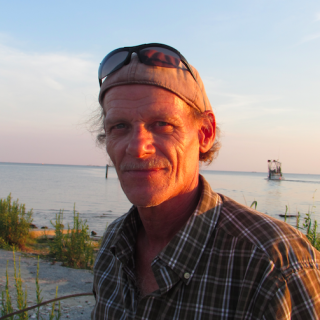
They include acute respiratory problems, recurring skin rashes and legions, cardiovascular complications, gastrointestinal impacts, migraines, short-term memory loss, longer term neurological difficulties, vision impairment, and eventual disability or death from the combined symptoms.
Other long term effects that are just beginning to show up are birth defects in children born to mothers who were exposed to Corexit during the disaster – some affected as tangentially as washing clothes stained with oil. Recent local media reports cite rises in autism among coastal children who were in utero or very young during the cleanup.
All of that from a dispersant famously declared by one BP spill supervisor in the heat of the disaster to be “as safe as dishwashing liquid.”
In keeping with perpetuating this notion, the federal district court in New Orleans currently assessing damages owed by BP has thrown each of those ailments out as criteria for medical compensation, Dr. Michael Robichaux, who treated hundreds of spill victims, told Bellona by phone from Raceland, Louisiana.
But cancer as a longer-term result of exposure to the BP spill has been until recently an outcome much of the medical community, big oil, some marine researchers, and even many non-profits have been reluctant to acknowledge. It’s a hot-potato topic, they say. Too dicey. Too speculative. Too dangerous. Even Dr. Robichaux an ardent health advocate for former cleanup workers, shied away from drawing any conclusions connecting Hill’s cancer to Corexit.
But the biggest effect of mentioning the “C” word, says Marylee Orr, Executive Director of the Louisiana Environmental Action Network (LEAN) – the go-to organization for tallying the health aftermath of the BP spill – is that it causes hard wrought research dollars for establishing the health link to dry up as fast as BP claims its oil has.
Cancer gaining acknowledgement
More recently, the condition of Hill, 54, is no longer surprising, say doctors, environmental scientists, non-profits like LEAN and whistleblower organizations that are dealing with health issues arising from the 87 day, 4.9 million barrel geyser unleashed by the Deepwater Horizon explosion.
The rising incidence of cancer is something these doctors and scientists – who are willing to speak with media despite continued BP pressure – are agreeing is the second, and possibly darker, phase of what President Barack Obama in 2010 called “the worst environmental disaster in American history.”
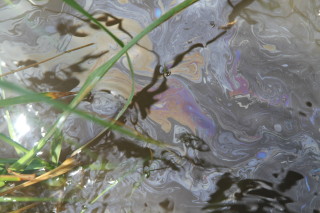
According to Dr. Wilma Subra, a MacArthur Foundation “genius award” winning environmental scientist based in New Iberia, Louisiana, Obama may not have realized how prophetic his words were.
“I think very definitely that we have reached a stage in this disaster when we will begin to see more incidents of cancer,” Dr. Subra told Bellona. “It is, in fact, already happening and it should be an issue of grave governmental concern – long-term exposure to Corexit can cause cancer.”
Emailed requests for cancer treatment rates recorded by the health departments in the the states of Louisiana, Mississippi and Alabama show a statistically insignificant bump in 2013 – the last year for which data is available – over cancer treatment rates for previous years.
But as Orr pointed out, any industrial disaster of such magnitude never yields up specific and immediate results, and it will be decades before a consensus can be reached. Lisbeth Gronlund of the Union For Concerned Scientists pointed out that disputes over the number of cancer deaths caused by Chernobyl – the name-brand in cancer-causing industrial disasters – still rage 28 years after it exploded and there is still not an accurate picture or accounting method.
“People don’t die of cancer right away so it’s not possible to get an accurate picture of how many cancer deaths the BP spill could result in,” said LEAN’s Orr. “Only time will tell, but over time as rage dies down and social memory shifts – the true outcome may never be accurate.”
Hill’s cancer – a 5 centimeter and an 11 centimeter tumor in his right lung that were discovered on an MRI following a car accident in Wisconsin in 2013 – has now spread to his lymph nodes.
His doctors said he will live another year to 18 months, a surprisingly rapid spread, especially for a patient whose lungs where spotless as of five years ago, said his doctors, who spoke in confidence.
Hill’s medical records include an MRI that was administered in 2009 following an exam for a back strain, which shows his lungs at that point were entirely clear.
Dr. Subra pointed to another patient who contracted a fast moving cancer from Corexit exposure. The patient wasn’t even a cleanup worker. He was a photographer with a spotless health record who documented the spill from helicopters and boats beginning in May of 2010 until shortly before his death in 2012.
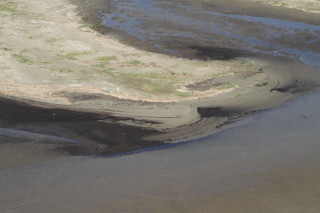
Dr. Subra determined that breathing the aerosolized Corexit caused cancer in the patient, whose name she wouldn’t release because of confidentiality constraints.
The patient, said Subra, asked that his cancerous tissues be maintained after his death so they could be studied to shed light on the cancer causing agents in the dispersant. After his autopsy, however, Subra said the tissue samples mysteriously ended up in the hospital incinerator.
Subra pointed out that in both Hill and her patient’s cases, there was a kind of lurid luck at play.
“Because Hill and the photographer’s conditions prior to the spill were known, we can draw educated conclusions from how they contracted their illnesses,” she said.
Potential cancer patients want whistleblower shields
It’s not just doctors seeing the correlation. Shanna Devine, Legislative Campaign Coordinator at the Government Accountability Project, the premiere whistleblower-protection group in the US, collected affidavits of cleanup workers and other Gulf residents for the organization’s expansive and damning report on the effects of Corexit. The report was released in April 2013.
In a telephone interview with Bellona from Washington DC, she said that, “It’s meticulously documented that Corexit causes cancer.” She cited court documents that were sealed – but to which GAP was given access – establishing cancer as a pervasive cause of death after extensive Corexit use to clean up the 1989 Exxon Valdez oil tanker spill in Alaska.
Meanwhile, Devine notes that GAP’s concerns over cancer reports grow.
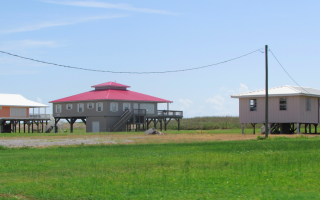
“We are receiving calls from affected communities reporting more potential cases of cancer,” Devine said. “So far, the evidence of a large-scale spike is anecdotal to our offices, but in due course I believe we will see more proof of cancer as more and more patients attest to their conditions in affidavits.”
Devine was clear that GAP doesn’t intend to draw the conclusion that cancer is the inevitable outcome of being exposed to the BP spill. The onus for that, she said, is on the US government and BP.
But she said the pieces of evidence for a possible spike in Gulf cancer rates “fit together.”
Citing the Environmental Pollution report, she said, “it’s hard to draw any other conclusion when so many carcinogenic, that is cancer causing, agents are present in the mix of Corexit and sweet crude.”
Devine described an atmosphere of concern where neighbors of people exposed to the spill in the Gulf’s closely knit fishing communities call GAP to report what the victims will not.
Cancer patients reluctant to disclose their condition
For Hill, the cancer diagnosis was something he kept secret from the closest of his friends and his two daughters, Amanda, 24 and Simple, 19, until the early days of August. His best friend and former captain, Johnson, who is currently fishing more fertile shrimp beds off Texas, still doesn’t know.
“I’m a fisherman […] – I don’t want a bunch of my buddies and family worrying over me, especially Buster [Johnson] – he’s got a boat to run and doesn’t need my distractions” said Hill, who doesn’t shy away from gory fish tales of life at sea and all the ways there are to “buy it” aboard a big commercial shrimper like the Roll Tide.
A winch can turn an absent-minded deckhand into fish bait. A mislaid line going suddenly taught can cost you a hand or a leg. Rough storm tides can wash you overboard. And there are always the sharks.
Hills hands, arms, and torso are a diary of scars cataloging nearly each of his trips to sea.
“I survived 30 years of that, all I know how to do is this crazy work,” he said. “And after God knows how many times I could have died out there, it’s cancer that’s gonna get me. Cancer from oil and Corexit.”
Culture of collusion and denial
The White House, the Environmental Protection Agency (EPA), the Federal Drug Administration (FDA), the US Coast Guard and BP all knew that each of the 1.84 million gallons of Corexit hosed onto the spill from BPs Macondo well were acutely toxic. Yet none of them have gone on record saying exposure to the oil or dispersant has anything to do with the emergent cancer cases.
Indeed, all of them told Bellona they’re convinced the cleanup was a roaring success. A response from BPs giant, impersonal online PR machine blamed Hill’s cancer on “lifestyle choices or simple chance.”
At its worst, the Macondo well, 77 kilometers off the shores of Louisiana, was leaking at an actual rate of 62,000 barrels a day to 146,000 barrels a day, the GAP report noted, which is a far cry from the advertised 5,000 barrels a day BP and the Coast Guard daily repeated was gushing from the ocean floor.
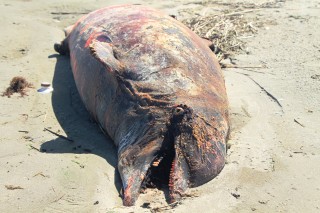
Yet, as of last April, all beach, water and wetlands reclamation efforts guided by BP were stopped – as were considerations of adequate health benefit payouts. The Corexit did its job. The oil disappeared and the beaches reopened for business.
But where at least 75 percent of that oil went is still a matter of dispute. While the government keeps hewing close to its 2011 line that it just “evaporated,” independent analysis of what is still washing up on Gulf beaches tells a completely different story.
The oil is still there, studies and eyewitness accountings tirelessly documented by Jonathan Henderson of the New Orleans-based Gulf Restoration Network indicate – coating the ocean floor and, washing up again and again in the form of tar balls, slicks, and dead sea life.
Masking tourists fears by unmasking cleanup workers
With fishing closed in the Gulf mere hours after the BP blowout, cleanup work for fishermen was the only work there was. And everyone needed it: When the well blew, six months were left in a two-month-old fishing season, the time when shrimpers make their annual paychecks.
Hill said the Roll Tide lost $300,000 in the 2010 fishing season alone.
During the cleanup, the Roll Tide crew wore what Hill described as sort of paper hazmat suits that were prone to tears routinely mended with duct tape. The rotating BP supervisors aboard his boat got comfortable in front of the plasma screen TV in the mess while the crew swabbed black sludge on deck, their bare skin often exposed to caustic sewage.
Rashes and welts appeared on Hill’s skin two days into the cleanup. Breathing and seeing got difficult, and a new light sensitivity means he always wears sunglasses.
Twelve- and eighteen-hour shifts of filling the skimmer and bringing its toxic haul to a larger disposal vessel ended in sledgehammer migraines, bloody noses, wracking coughs, and muscle spams.
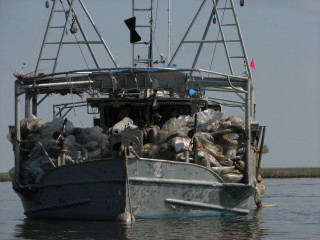
Though respirators were onboard as required in the BP cleanup manual, BP supervisors discouraged Hill and his crew from donning them. “
They’ll scare off tourists,” he was told. Though what tourists 20 miles into an oil stain the size of Rhode Island was unclear. Besides, said the BP supervisors, they weren’t hurting from anything but heat rash and dehydration – not unthinkable in the 40 degree temperatures they were toiling in. But the headaches, nausea and dizziness got worse.
Finally, a minor mutiny by the Roll Tide crew got them papery surgical facemasks.
“There was just something not right about the whole thing,” Hill told Bellona. “All this gear that they wouldn’t let us use, planes dumping dispersant from the sky, water as thick and black as tar, stuff our skimmer couldn’t even pick up, all the rules and the rules that got broken – and feeling sick all the time.”
According to BP safety policy, as outlined to Hill and his crew during their cleanup training, no planes were supposed to spray Corexit within two nautical miles of oil recovery boats.
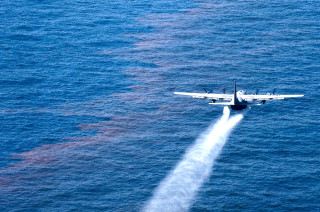
Like so many other rules, that one went by the wayside, too. While struggling to tow their skimmer through rough seas without splitting it, a C-130 came in low and unleashed a thousand-gallon payload of Corexit right on the Roll Tide’s deck.
“We all got soaked to the bone,” said Hill. “Everybody knew that wasn’t supposed to happen, and we spent the next few days hovering over toilets and feeling pretty sick – everybody broke out in rashes and nobody could hold down their grub. But we got the oil in.”
EPA unwittingly reveals cancerous effects of dispersant
A 2002 study by the EPA points out the cancerous effects of Corexit, but tap dances around them in such a way as to make them seem distant and insignificant.
Bellona spoke with an anonymous source at the EPA who is familiar with the studies, and the source admitted that the data is purposely presented in a circumlocutory way.
The report studied lab animals exposed to 2-Butoxyethanol, the compound in Corexit responsible for its cancerous effects. The source told Bellona that “we saw random cancers but they were too diffuse to characterize as caused by one source.”
From this, researchers extrapolated that if cleanup workers were to wear the correct protective hazmat gear that protects them from the non-cancerous effects of 2-Butoxyethanol, then the same gear should protect them from the cancer causing agents in the chemical.
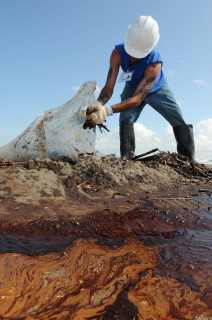
But as Hill and LEAN’s Orr explained, barely any of the 47,000 rescue workers deployed were wearing appropriate protective gear.
Planning for death
Hill is far luckier than many in a terminal state following BP cleanup related sicknesses, and prudent financial planning will leave his family cared for.
“I’ve always saved my money, made sure my girls are provided for,” he told Bellona in a smoky fisherman’s bar in Bayou Labatre where the appearance of a non-local causes the jukebox to skip a beat.
When it became clear the medical case had fallen apart in court, Hill took a $60,000 one-off medical settlement BP offered until this month. He’s also selling off his trucks, his house in Bayou Labatre and some land he owns in his home state of Tennessee.
“Then my girls can get their lives back, same as that jackass [now former BP CEO Tony] Hayward was whining about when the spill got too much for him,” he said, punctuating his point with a long-neck bottle of Bud Light.
What Hill plans to do with his remaining time is slightly uncertain for the moment, but two things are sure: He’s hanging a sign on his door in Bayou Labatre reading “Gone Fishing,” and he is not going to subject himself to the ravages of chemotherapy or surgeries and die in a hospital.
Eventually he’ll pull the dust cover off his Harley and head out on the open road, see friends. Then again, he may take to the sea with his fishing tackle in hand.
“I wasn’t meant to die in a hospital bed,” he said with a defiant half smile. “I was meant to die in the open, off on some trip – once you get salt water in your veins, it doesn’t come out.”
This is a first in a series of stories Bellona is producing on the aftermath of the BP oil spill.

A survey of events in the field of nuclear and radiation safety relating to Russia and Ukraine.

But it’s unlikely to impact emissions from shipping along the Northern Sea Route.

In this news digest, we monitor events that impact the environment in the Russian Arctic. Our focus lies in identifying the factors that contribute to pollution and climate change.

The following op-ed, written by Bellona’s Charles Digges, originally appeared in The Moscow Times. In recent months, the Russian nuclear in...